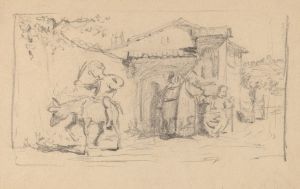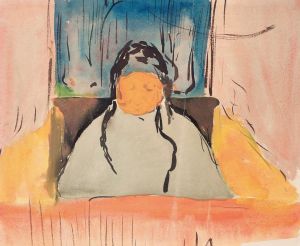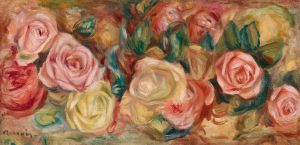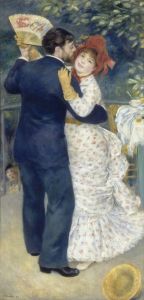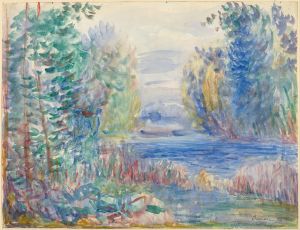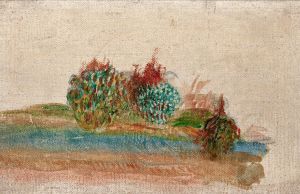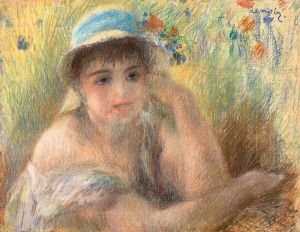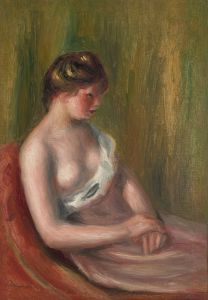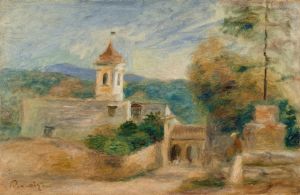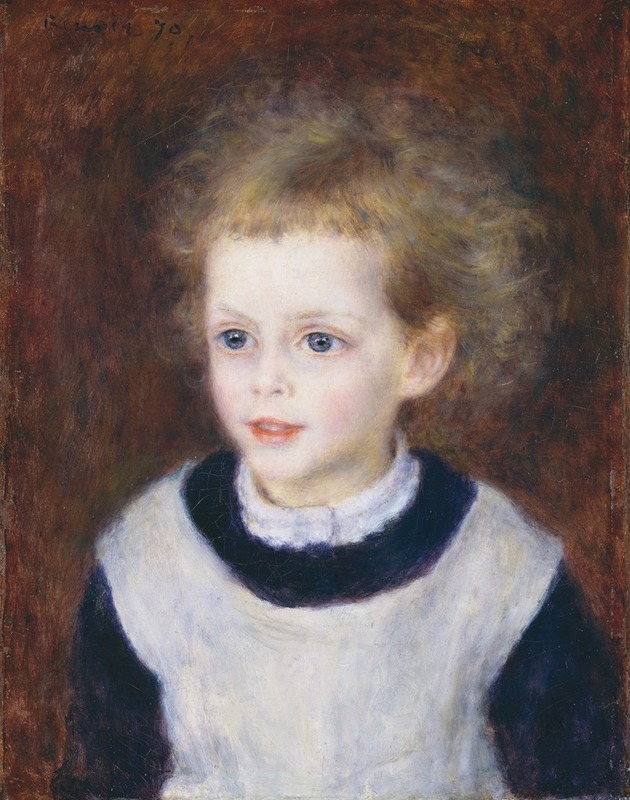
Marguerite-Thérèse Berard
A hand-painted replica of Pierre-Auguste Renoir’s masterpiece Marguerite-Thérèse Berard, meticulously crafted by professional artists to capture the true essence of the original. Each piece is created with museum-quality canvas and rare mineral pigments, carefully painted by experienced artists with delicate brushstrokes and rich, layered colors to perfectly recreate the texture of the original artwork. Unlike machine-printed reproductions, this hand-painted version brings the painting to life, infused with the artist’s emotions and skill in every stroke. Whether for personal collection or home decoration, it instantly elevates the artistic atmosphere of any space.
Pierre-Auguste Renoir, one of the leading figures of the Impressionist movement, is renowned for his vibrant light and saturated color, often focusing on people in intimate and candid compositions. Among his numerous portraits, "Marguerite-Thérèse Berard" stands out as a testament to his skill in capturing the essence of his subjects with warmth and sensitivity.
The painting "Marguerite-Thérèse Berard" was completed in 1879, during a period when Renoir was deeply engaged with the Impressionist movement, yet beginning to explore more structured compositions and a more refined technique. This period marked a transition in Renoir's style, as he started to move away from the loose brushwork typical of early Impressionism towards a more disciplined approach that would characterize his later works.
Marguerite-Thérèse Berard, the subject of the painting, was the daughter of Paul Berard, a banker and one of Renoir's most significant patrons. The Berard family played a crucial role in Renoir's career, providing him with financial support and numerous commissions. Renoir painted several portraits of the Berard family members, capturing them in various settings and moods, which allowed him to experiment with different techniques and approaches.
In the portrait of Marguerite-Thérèse, Renoir employs a delicate palette of soft pastels, which imbues the painting with a gentle and serene atmosphere. The young girl is depicted with a calm and composed expression, her gaze directed slightly away from the viewer, which adds a sense of introspection and depth to her character. Renoir's use of light in this painting is particularly noteworthy; he skillfully captures the play of light on Marguerite-Thérèse's face and hair, creating a luminous effect that enhances the overall tenderness of the portrait.
The background of the painting is rendered with loose brushstrokes, a hallmark of Renoir's Impressionist style, which contrasts with the more detailed depiction of the subject. This technique not only draws attention to Marguerite-Thérèse but also creates a sense of immediacy and intimacy, as if the viewer is sharing a quiet moment with her. The subtle interplay of colors and light in the background further complements the subject, adding depth and dimension to the composition.
Renoir's portraits, including "Marguerite-Thérèse Berard," are celebrated for their ability to convey the personality and mood of the sitter with remarkable clarity and empathy. His approach to portraiture was not merely about capturing a likeness but about expressing the inner life and spirit of his subjects. This painting exemplifies Renoir's mastery in this regard, as he manages to encapsulate the innocence and grace of Marguerite-Thérèse with a simplicity that is both elegant and profound.
Today, Renoir's "Marguerite-Thérèse Berard" is appreciated not only for its artistic merit but also as a reflection of the close relationships between the artist and his patrons. The painting remains a significant example of Renoir's portraiture, showcasing his transition from the more spontaneous style of early Impressionism to a more structured and refined approach that would define his later works.






